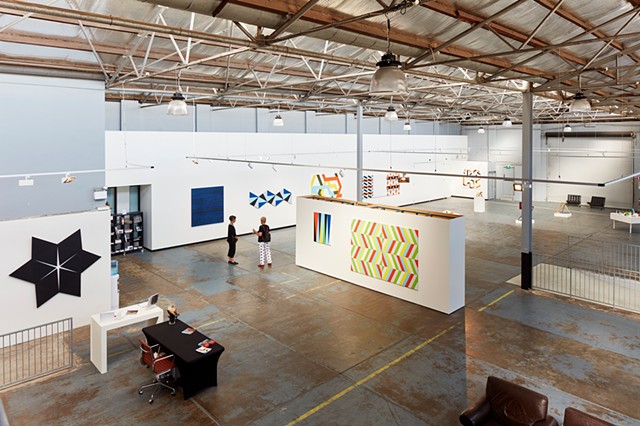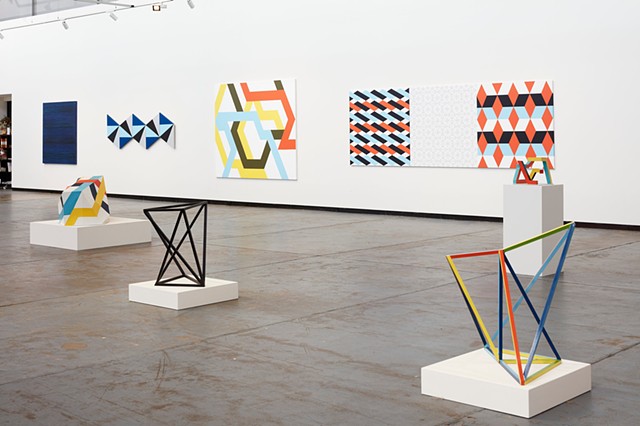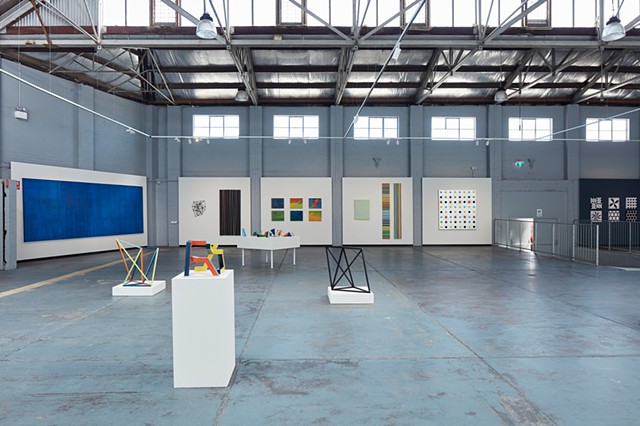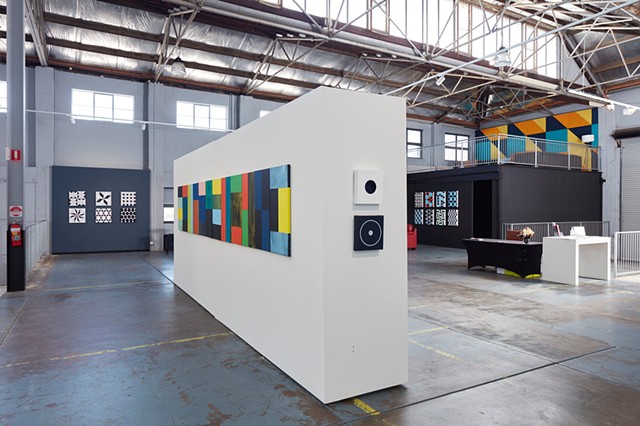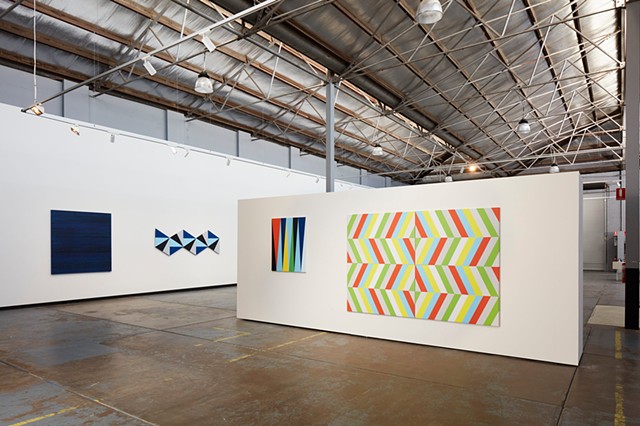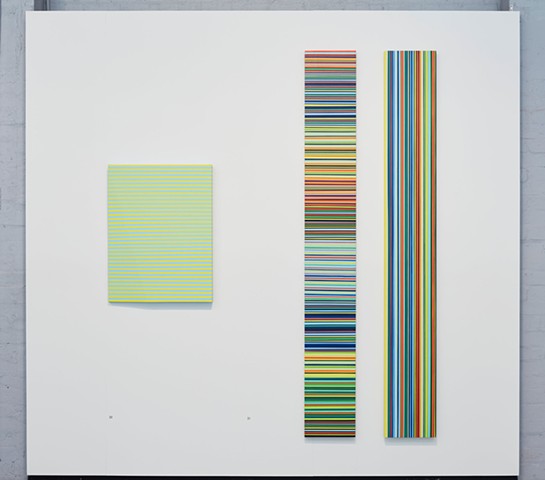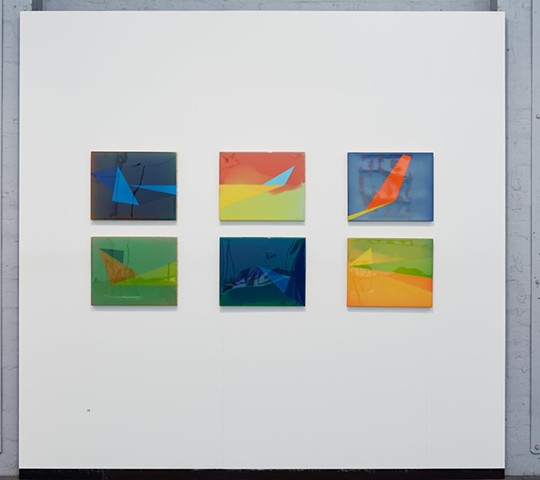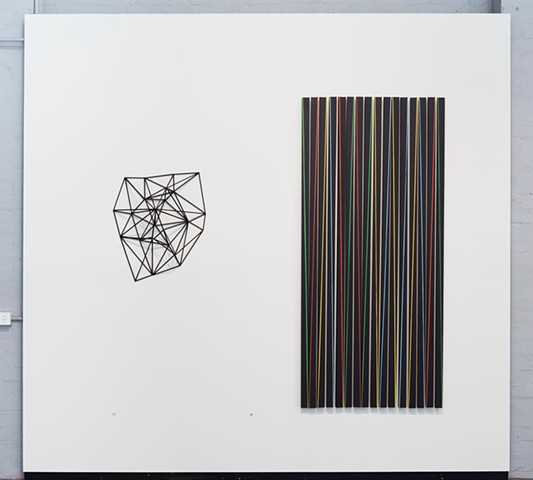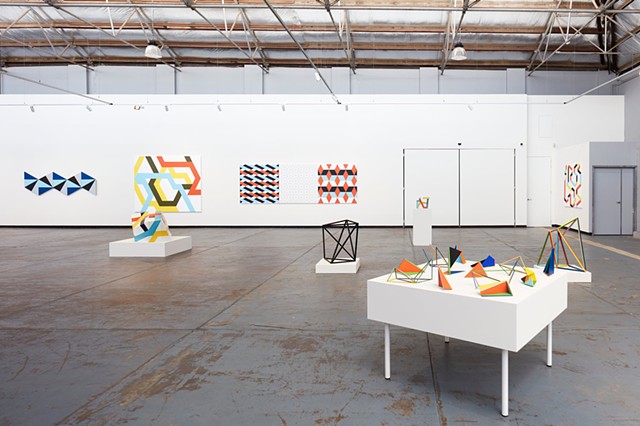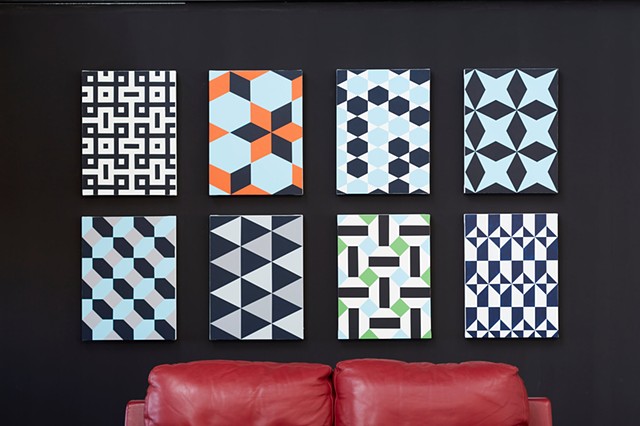Roll The Tape+ Holmes a Court Gallery 2023
All art making encourages a form of conversation, and one important conversation for me has been between how writers engage with my work as an artist. This quote by curator, John Stringer, is one of those important conversations that form over the duration of an artistic career, detailing the influences and legacies found in my work. It is a kind of eloquence given to my practice, and the conversations that are held within. Something that as an artist, I cannot always do, or are able to do, or want to do.
This exhibition represents a survey of my practice with paintings and sculptural works produced between 1998 and 2023. The majority of works are drawn from the Roll The Tape Project, initially shown at the Geraldton Regional Art Gallery, then selected by Art On The Move to tour regional art centres from 2021 – 23. This group of works has been augmented with a selection of recent works produced from 2018 to 2023.
Another important conversation generating my practice has been the influence of the built environment around me. During numerous trips and art residencies in Europe I discovered geometric tessellating floor patterns in historic cathedrals, feeding my fascination with pattern. Closer to home was when our family moved into a 1960's built house in 2004, where the preponderance of geometric terrazzo floor tiles in bold colours lay beneath our feet. Built by the Italian migrant, terrazzo floor tile maker, Guiseppe Scolaro, this modernist home was a perfect fit for my existing and residing interests in colour, geometry and pattern, a methodology noted by Louise Morrison:
In the same way that the circular elements in Richards' still life paintings of the 1980s became the geometric circles in his later works, the triangular and quadrilateral shapes in his own floors directly inform his current investigations. The "multistable" perceptual effects that are produced by geometric tessellating patterns have become of great interest to Richards and he seeks suitable patterns from a broad range of sources to explore these.
Siena, a large, acrylic on canvas triptych, is named after the Italian town that is home to the cathedral in which Richards found the design that underpins this work. He thinks of the pattern on the centre panel as the skeleton or "mother grid" from which the patterns on the outer panels originate. Whilst the centre panel has been hand painted, the others have been produced with paint rollers and masking tape as Richards selects whatever materials and methods best enable him to achieve the desired outcome for each piece.
Richards is curious about the rationale for the widespread use of geometric tessellating patterns in the tiled floors of medieval cathedrals and palaces. Such visual ambiguity could seem out of place in architectural settings that are designed to reinforce the unquestionable authority of Church and State. Perhaps they provide a metaphorical hint at eternity though boundless repetition across a Euclidean plane. It seems that whilst Richards' work can be understood as non-objective, his titles lead us to other, usually playful, layers of questioning and understanding.
Louise Morrison (Dickman) 2012
